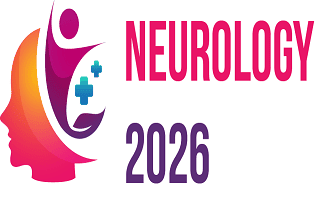4th International Conference on
Neurology & Neurological Disorders
October 15-16, 2026 | Paris, France

Neurology 2026

Salford royal NHS foundation trust, UK
Abstract:
Background: Since the
efficacy and safety of endovascular thrombectomy (EVT) in patients with acute
ischemic stroke with a large infarct area is still inconclusive, we sought to
compare functional and neurological outcomes with the use of endovascular
thrombectomy versus medical care alone.
Methods: We searched MEDLINE (via PubMed), Embase, Cochrane Library,
ClinicalTrials.gov, and the International Clinical Trials Registry Platform
(ICTRP) to retrieve all the relevant randomized controlled trials (RCTs) on
this topic. Review manager (RevMan) was used to perform meta-analyses using a
random-effect model. Dichotomous outcomes were pooled using risk ratios (RR)
with 95% confidence intervals (CIs).
Results: Our meta-analysis included 6 RCTs with a total of 1665 patients. Most
studies included patients with an ASPECTS score of 3-5. Our results demonstrate
that endovascular thrombectomy significantly increased the rates of functional
independence (mRS ≤ 2) (RR, 2.49; 95% CI, 1.89-3.29) and moderate neurological
outcome (mRS ≤ 3) (RR, 1.90; 95% CI, 1.50-2.40) at 90 days. The benefit of EVT
for these outcomes remained the same at 1-year follow-up. Endovascular
thrombectomy was associated with increased rates of early neurological
improvement (RR, 2.22; 95% CI, 1.53-3.22), excellent neurological recovery (mRS
≤ 1) (RR, 1.75; 95% CI, 1.02-3.03), and decreased rate of poor neurological
recovery (mRS 4-6) (RR, 0.81; 95% CI, 0.76-0.86). No significant difference was
found between the two groups regarding all-cause mortality (RR, 0.86; 95% CI,
0.72-1.02), decompressive craniectomy (RR, 1.32; 95% CI, 0.89-1.94), and the
incidence of serious adverse effects (RR, 1.39; 95% CI, 0.83-2.32) between the
two groups. Endovascular thrombectomy significantly increased the rates of any
intracranial hemorrhage (RR, 1.94; 95% CI, 1.48-2.53) and symptomatic
intracranial hemorrhage (RR, 1.73; 95% CI, 1.11-2.69).
Conclusion: Endovascular thrombectomy (EVT) significantly improves neurological
and functional outcomes in patients who present within 6 hours of stroke onset
with ICA and proximal M1 occlusions, and ASPECTS scores ranging from 3 to 5,
compared to medical therapy alone, with an increased risk of symptomatic
intracranial hemorrhage.
Biography:
Ayesha Amjad is a dedicated medical professional affiliated with the Salford Royal NHS Foundation Trust in the United Kingdom. She specializes in providing high-quality patient care and is actively involved in clinical practice and research aimed at improving healthcare outcomes
